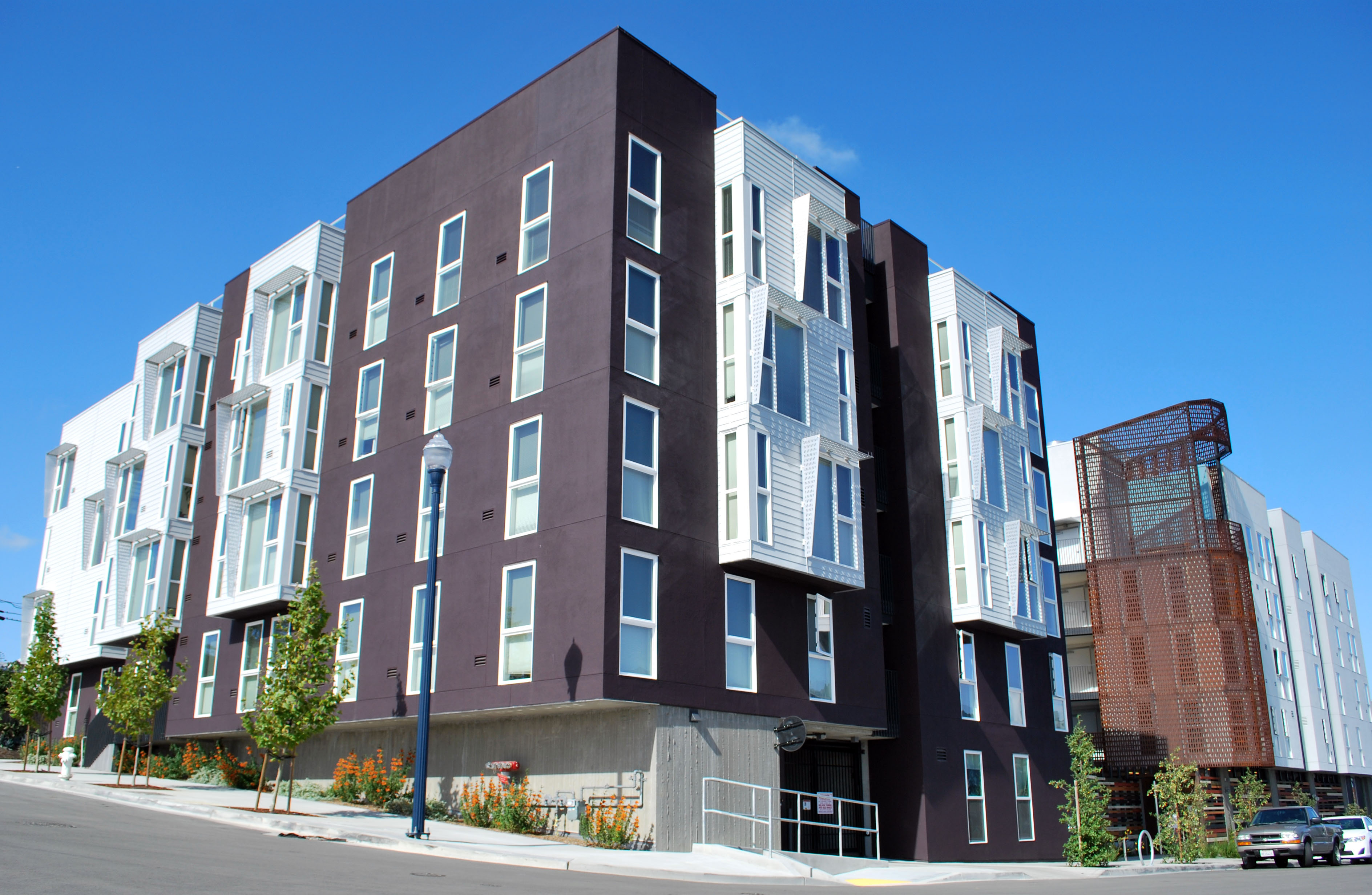Emerging Projects

OCII Hunters Point Shipyard Block 49, Photo Credit: Maximilian Barnes
|
Project Name |
Description |
|---|---|
| MOHCD – Future Pipeline Projects | MOHCD’s planned projects need to meet key criteria for other public investment, including scale, readiness, proximity to public transit, ability to leverage non-City sources of funding, and location in neighborhoods that have low production and/or are well-resourced. The pipeline includes: 100% affordable multifamily buildings that are either stand-alone developments or part of multi-phased development areas, and below-market-rate (BMR) inclusionary units in market-rate buildings. MOHCD’s pipeline includes all projects that are financed through city funding agreements, ground leases, disposition and participation agreements and conduit bond financing. Affordable housing developments, such as state-funded projects, that do not meet these criteria are not included in the pipeline. The pipeline of 11,897 affordable units in 313 projects is an ambitious and significant commitment to producing more affordable housing in San Francisco. However, more units beyond these are needed, and the City will need to pursue opportunities and continue to prioritize affordability into the future. Future projects are opportunities to expand MOHCD’s pipeline that are not currently accounted for in MOHCD’s pipeline and allocations budget. MOHCD must be nimble and opportunistic in acquisition of properties that come on the market, as funding becomes available, and especially if the acquisition is below market value. Based on planned spending levels, the City is projected to meet 50% of the very low-income, 82% of the low income, and 42% of the moderate-income targets in the 2015-2022 RHNA cycle. Non-deed-restricted moderate-income housing is produced primarily through the City’s ADU program. To meet 100% of the 2023 – 2031 targets, excluding the portion that is projected to be met through inclusionary units, the total housing expenditure plan would need to increase by approximately $18.5 billion. Meeting this full RHNA allocation requires policy decisions outside the purview of the Capital Plan and would depend on the contribution of inclusionary units delivered through market rate production, which is extremely difficult to model, especially given the economic impact of the COVID-19 pandemic. San Francisco strives to deliver as much affordability as possible while meeting other urgent challenges in its public capital portfolio and other service obligations. |
| TIDA – Inclusionary Affordable Developments | TICD has multiple rental and condominium projects in the second subphase area on Treasure Island in various stages of planning and building permit review and are expected to start construction between 2023 and 2024. These buildings will include for-rent and for-sale inclusionary affordable units. |
| TIDA – HealthRIGHT360 Projects & Community Housing Partnership
|
The third subphase area on Treasure Island includes four additional parcels for the development of affordable housing. Two 100% affordable housing developments are planned to be constructed in partnership with HealthRIGHT360 and Community Housing Partnership. TIDA is working with the San Francisco Department of Public Health (DPH) on a plan to co-develop the building, and DPH is seeking State funding towards the project. Mercy Housing is the developer for this project and predevelopment for this project is planned to take place before the end of 2022. Because HealthRIGHT360 operates treatment and transitional housing programs, many funding sources for the construction of permanent affordable housing will not be available to finance the construction of the HealthRIGHT360 building. |
| HOPE SF | HOPE SF was created in 2005 in response to diminishing Federal funding for San Francisco’s largest and most neglected Public Housing sites, namely, Alice Griffith, Hunters View, Sunnydale/Velasco, and Potrero/Potrero Annex. HOPE SF represents a twenty-year human and real estate capital commitment by the City to achieve reparations for the insidious impacts of past and on-going trauma, systemic and institutional racism, and deep and persistent poverty (see discussion in Economic and Neighborhood Development chapter). HOPE SF will replace 1,900 dilapidated public housing units and add affordable and market-rate units, nearly tripling the total number of homes to more than 5,300 to transform long underserved communities into vibrant, mixed income neighborhoods. In addition, HOPE SF neighborhoods will be realigned to the City street grid, reducing social, political and physical isolation. At the same time, aging and obsolete infrastructure will be restored in new updated, below ground utilities, funded by the City. The populations served include existing public housing households who are guaranteed a right to return to the rebuilt housing, and new very low- and low-income households up to 60% AMI. An example of a HOPE SF project in the pipeline is Sunnydale Block 3. This project will include approximately 170 units, spread across two buildings, and will include 127 set aside for existing public housing residents with a right to return, and another 52 for new low-income households up to 60% AMI. The project includes a mix of 1-bedrooms, 2-bedroom, 3-bedroom, and 4-bedrooms. Construction will start in 2023 and is expected to be complete by 2025. The buildings will also include almost 30,000 square feet of ground floor community serving space, including a neighborhood health center operated by Department of Public Health, a new childcare center, and new ground floor retail. The majority of MOHCD’s sources of funding are eligible for HOPE SF, with the exception that impact fees can only be used on new units and not replacement units. The total need for HOPE SF is estimated at $732 million over the next 10 years, in addition to the development costs that are already accounted for in the Economic and Neighborhood Development chapter. |

